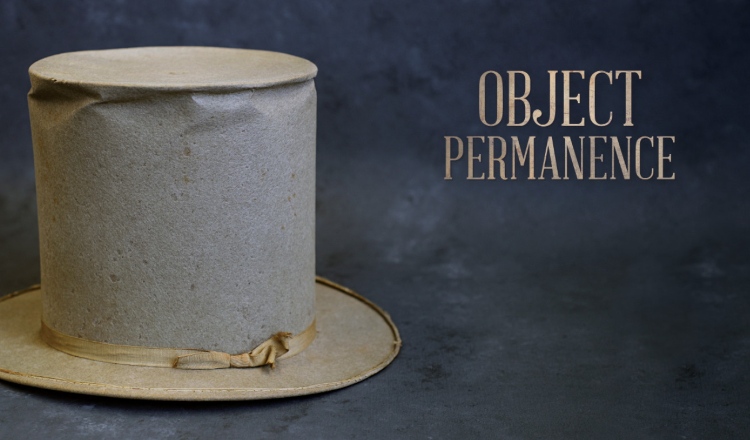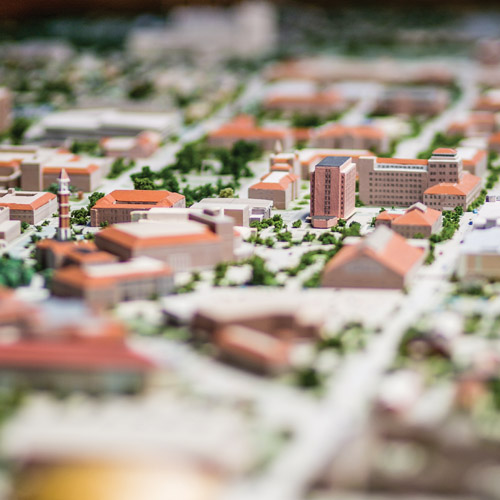
21. Campus Model
A fixture in the Great Hall of the Purdue Memorial Union since 1957, the campus model has become a meeting place for students, a starting point for tours, and a favorite stop for alumni visiting campus. The cost of upkeep on the elaborate diorama put a pause on updates for about a decade, and in 2015, the University considered replacing it with an interactive digital display. The alumni uproar was undeniable. The icon has since been updated and reinstated in the Great Hall.
Gaze upon the campus model in the Great Hall of Purdue Memorial Union.
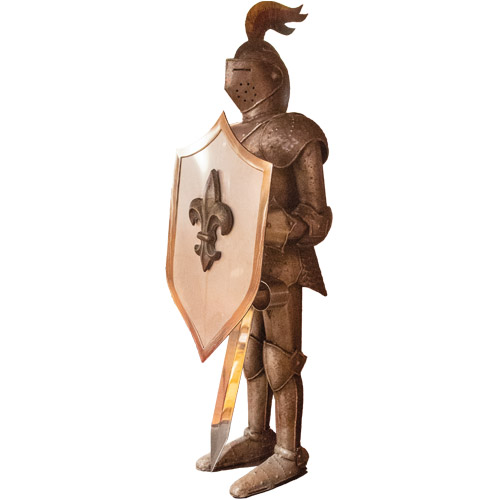
22. Cary Knight
No one can pinpoint the exact origins of the Cary Knight mascot, but he’s been hanging around the halls of the Quad for decades. Tales abound of how the three-foot-tall knight was a favorite target for kidnappers from other dorms. As part of the renovation and expansion of the Cary Knight Spot Grill in 2006, the Cary Knight earned a permanent place, enclosed and protected in a glass case.
Grab a bite next to the knight at the Cary Knight Spot Grill.
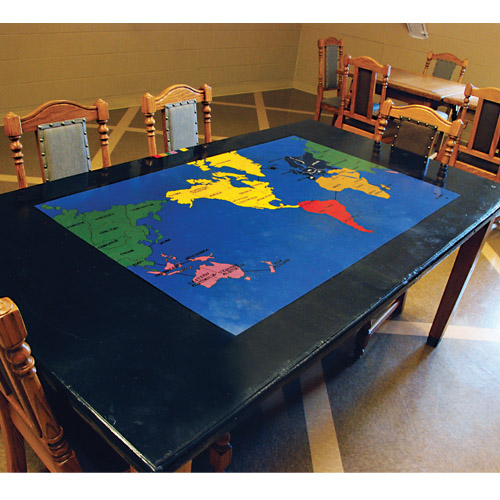
23. Cary Risk Table
Dave Vrbanich (MS M’73) constructed the Cary Risk table while he lived at the Quad as a counselor. He built the table in his room, tracing a world map on carbon paper and then transferring the outline to the tabletop before painting the continents. The table was refinished by students in 2004 and continues to reside in the fourth-floor lounge of Cary Southwest.
Request a tour of Cary Quad at the University Residences Alumni and Guest Center.
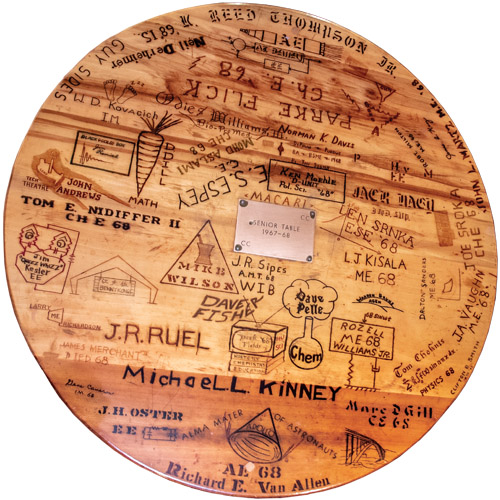
24. Cary Senior Table
The Cary Knight Spot Grill, located in the lower level of Cary Southeast, features a collection of a dozen or so wood tables immortalizing the graduating classes of Cary Quad men. Dozens more are in storage. The tables are rotated out periodically. Each tabletop includes etchings and art from that year’s senior class, an honor reserved for students who spent all of their undergraduate years living at Cary Quadrangle.
Eat your dinner at a Cary Senior Table in the Cary Knight Spot Grill.
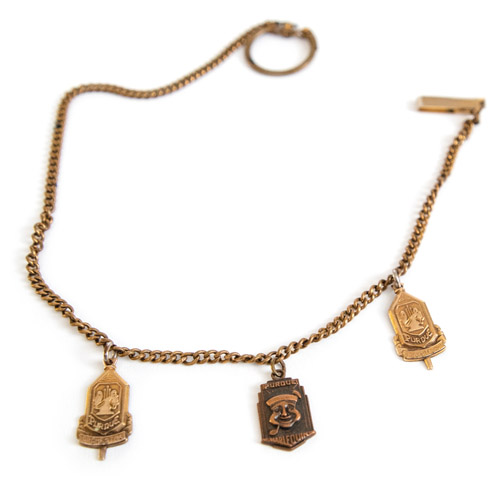
25. Charm Bracelet
Students have always found ways to wear readily visible symbols of their campus affiliations or status. For women in the 1950s and early ’60s, the charm bracelet made a personal statement about the wearer’s interests and social standing. Generally, the more charms on the bracelet, the more connected the individual and the stronger the indication that she was active with campus clubs and organizations.
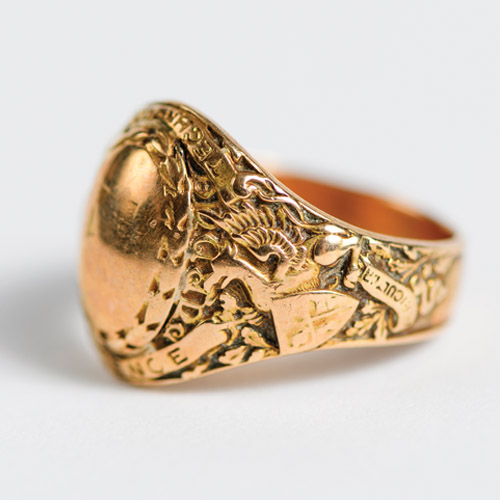
26. Class Ring
Howard Eastburn Smith of Bucks County, Pennsylvania, graduated from Purdue in 1906 with a bachelor’s in mechanical engineering. His 1906 class ring is embellished with College of Science and Purdue University insignias.
Order Your Official Class Ring
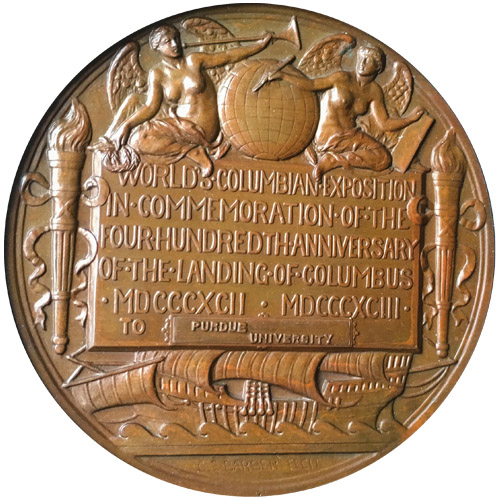
27. Columbian Medallion
The 1893 World’s Columbian Exposition — also known as the Chicago World’s Fair — celebrated the 400th anniversary of the arrival of Christopher Columbus in the New World. Virginia Claypool Meredith, who would later become the first woman on the Purdue Board of Trustees and a frequent speaker at the University’s outreaches to farmers, served on the World’s Fair Board of Lady Managers. Writer George Ade (S’1887, HDR LA’26) and illustrator John T. McCutcheon (S’89, HDR LA’26), who met while students at Purdue and were Sigma Chi fraternity brothers, worked as writer-artist team for the Chicago Record, filing a daily story titled “All Roads Led to the World’s Fair.” The exposition’s awe-inspiring cultural and industrial displays had a profound effect on architecture, the arts, and American industry at a time when the United States was moving into a period of industrial expansion and innovation. Souvenir medallions were customized for participants or contributors to the exposition. It is fitting that Purdue, with its emphasis on advancement in technology, science, and agriculture, would be linked to this monumental event.
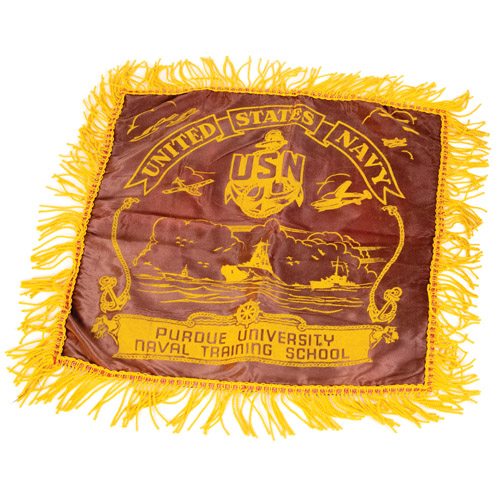
28. Comfort Pillow
Purdue played an important role in World War II, not only with the men and women who enlisted but also for the critical training that took place on campus, including naval support services. This silk sweetheart pillow was meant to be sent from a sailor or soldier to a loved one as a comfort for the time spent apart. The design of this pillow clearly shows the connection between the University and the United States Navy, and the presence of the pillow is a reminder of how tough life was for families and friends when a loved one went off to fight, perhaps never to return.
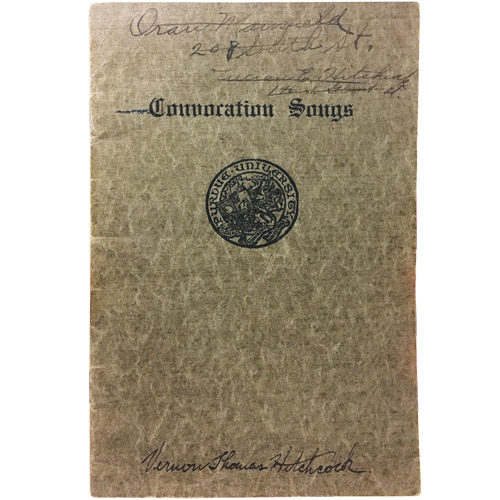
29. Convocation Sings Pamphlet
Early classes attended mandatory chapel each morning. Students gathered in the chapel on the third floor of University Hall until Eliza Fowler Hall opened in 1903. Convocations were also held regularly, bringing the entire student body together. This pamphlet, circa 1915, contains songs both sacred and secular. The signatures on the cover charts its ownership from Oran Mansfield (A’1919) to Lucian Hitchcock (CERT A’1917) to his son Vernon Hitchcock (A’40).
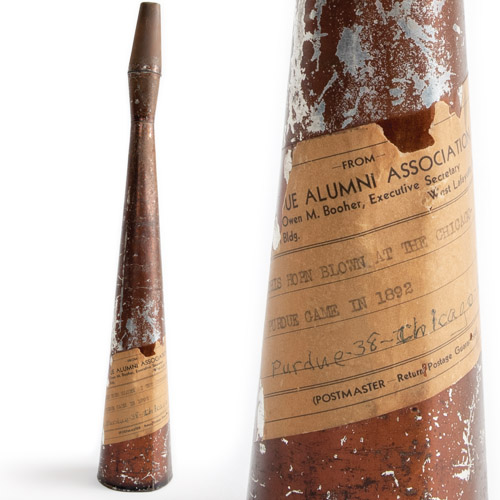
30. Copper Horn
This horn was blown at the Purdue vs. University of Chicago football game held November 19, 1892, at Stuart Field, now the site of Elliott Hall of Music. The Boilermakers were undefeated that year and won the game 38–0. It was the first meeting of the now defunct Chicago–Purdue football rivalry. Purdue played its final game against the Chicago Maroons in 1936. Chicago won the series with a record of 28–13–1.
The copper horn is on display in the Rudolph Room at Dauch Alumni Center.

